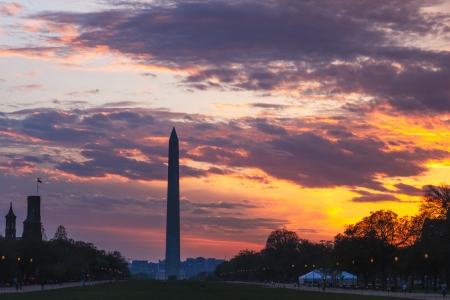
In the second half of March, I began to visually document the Nation’s Capital under the soft quarantine imposed by our mayor after Covid-19 began to spread. It was, at first, a suggestion we stay home, and my office depopulated in advance of the more restrictive order that came a short time later. Mindful of safety, and taking precautions, I still went out, often early, sometimes at dusk, to try capturing D.C. in its prettiest season, and to document life under quarantine.

I became as highly attentive to weather forecasts and the times the sun would rise and set as my wife and I are when we’re out West, and color landscape photography in a mountain valley, not street photography in the city we live in most of the year, is the objective.


The city was, at is always is in spring, amazingly beautiful, as the tulip frenzy progressed to Easter. It was eery to go on walks and see virtually no one, the citizens of the capital city having gotten the message to stay home even as the White House flopped around in incompetence and indecision. I found I was oddly suited for the absence of direct human contact, and the conversion of my urban street photography into something akin to urban landscape photography.

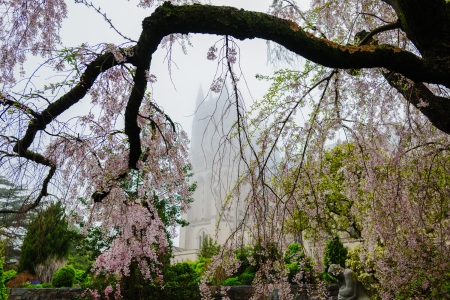
On bright and sunny days, people would go out, but fewer of them, and with masks. Runners along the Mall seemed stunned that, in what typically is our city’s busiest tourist season, there was no one there.
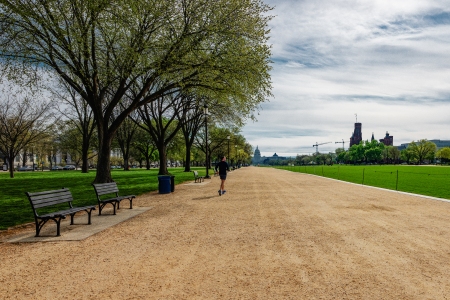

I remembered, from college, seeing that 1950’s horror movie, The Day The Earth Stood Still, and it was like that. You could stand in the middle of the tourist corridors and see just the occasional bike rider.

I get a paycheck, and being at home was perfectly comfortable, but I found myself overwhelmed with sadness as the economy flatlined, and people suddenly lost work, and those essential employees had to risk their lives to go to work.

Do you see the guard above? She probably considered herself lucky to have work to go to, but I remember standing there for a long time, my head a jumble of emotional calculations, sad that she was in our city’s most beautiful museum without the usual run of schoolchildren there on Spring Break visits, happy that she seemed safe, with no one around her. It was a bewildering, emotional, upside down moment, typical of the world under the Coronavirus lockdown. Everything is upside down.

Just the birds were out, as in a typical spring morning. But there was nothing typical about this, and one had to look at things in a new, unfamiliar way.
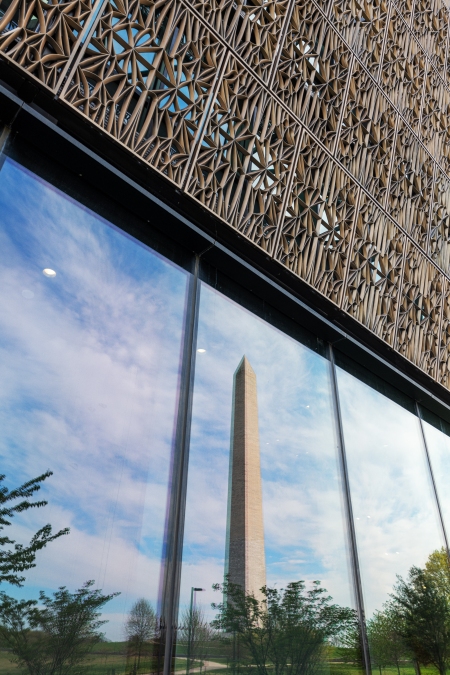

And then came a magical few evenings when the Pink Moon rose, a super moon, and we rushed to capture it on an empty National Mall.

The moon itself was gorgeous, and as it lifted into the sky, it was so bright it was really hard to capture. It really did cast the sky in pink light. I remember standing there, amazed, and thinking of Nick Drake, whose album Pink Moon tugs at our heart, and when we got home, we learned that even as the moon had risen, John Prine had died of Coronavirus.

The next night, we went down to the Mall, again to try capturing the moon, and on our way, over Constitution Gardens, got a distant glimpse of the Lincoln Memorial in the Blue Hour, and everything was right in the world. We once again brought our tripod, but the pictures we took of the moon paled in comparison to one of the few pictures we’ve captured of what I would deem a street scene, as the bicyclists below on the left side of the image stayed still long enough for a two-second exposure to capture everything, the image I will keep for life as the best depiction of the unbelievable beauty of being in Washington during this horrible period.

I kept going out at dawn and dusk, though I felt my spirit flagging. It was hard to keep thinking of where I might want to position myself to take pictures. It seemed incredibly artificial to be capturing images of pristine, official, privileged DC and ignore all the sections of the city where people actually live. In brief forays into the city’s urban streets, however, I was pretty stunned to see people clustering, some with masks, many not, and it seemed far better to stay in my socially distant world, driving or walking to take pictures where people were few and far between.


Easter came, and the city bloomed, as it usually does at Easter time. But time began to hang heavily as we started our fifth week of working from home.
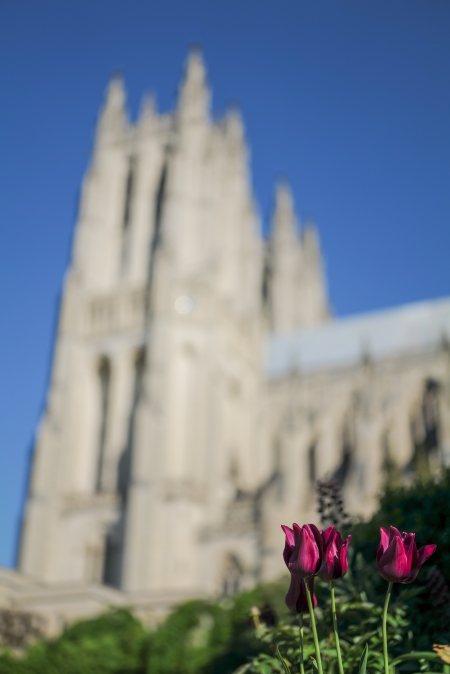

Walking with a camera in hand remained the essential psychological outlet, but the sense of unreality began to intensify. And all the while, walking from our home or car, after a day spent working, was a reminder of how many people were in absolute bewilderment of sudden joblessness, or, in New York, the horror of the pandemic raging all around them. D.C. officials kept talking about the future peak in cases, but in the city’s Northwest Quadrant, it all seemed far away.

The Earth still stood still, but our stomach churned and head jangled from the blasts of sheer insanity emanating just a short distance away in the White House briefing room. It was hard to reconcile this peaceful, gorgeous city with the unfathomable craziness of the President lashing out at governors fighting the pandemic, at the Supreme Court sending people out to vote in Wisconsin amidst a plague.

Ah, but by now the Azalea Frenzy had hit our backyard, and weather warmed, at least briefly.

We remembered how our documentation of D.C. under quarantine had begun under a cold March sunrise at the Lincoln Memorial, and by now, even as people kept their distance, things were warm, spring was here, and of course our spirits lifted. People were out on the Mall, but appropriately — we had masks on, for the most part, and there was enough space between us and the runners to be able to continue walking comfortably. How long this will go on, and what happens when the weather gets even warmer, we don’t know. For now, as our quarantine continues and news comes that at least New York is past its peak, spring continues, and we look up.

To be continued…
John Buckley’s daily feed of images on Instagram can be found @tulip_frenzy. For the full set of images, head over to our sister site, John Buckley in Black and White and Color.






























